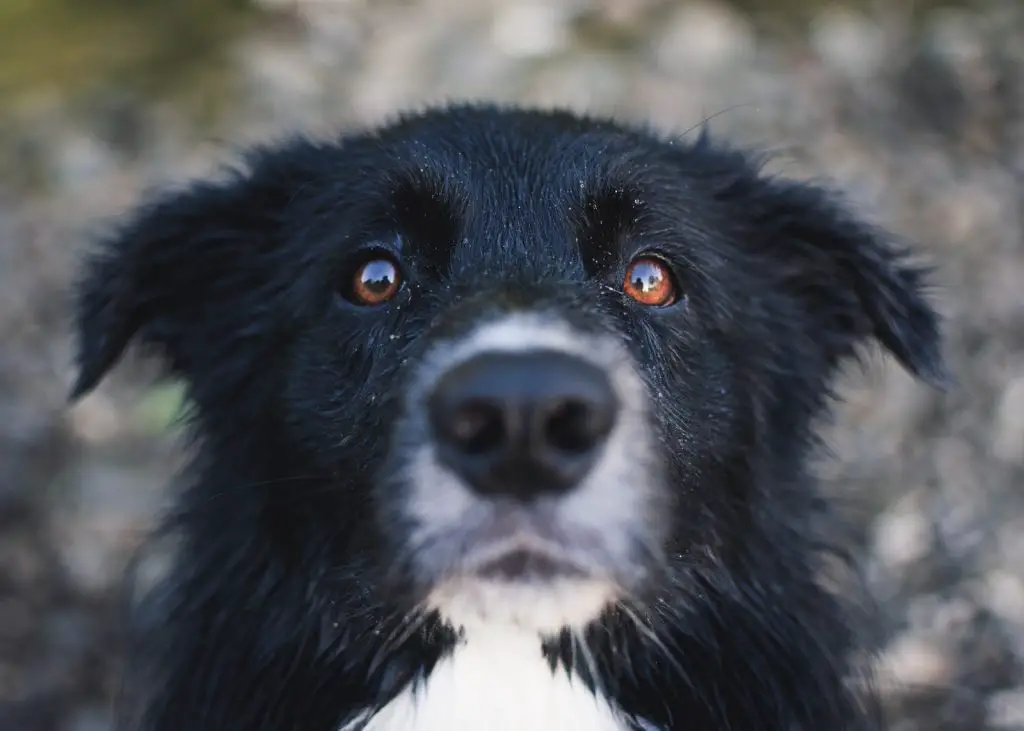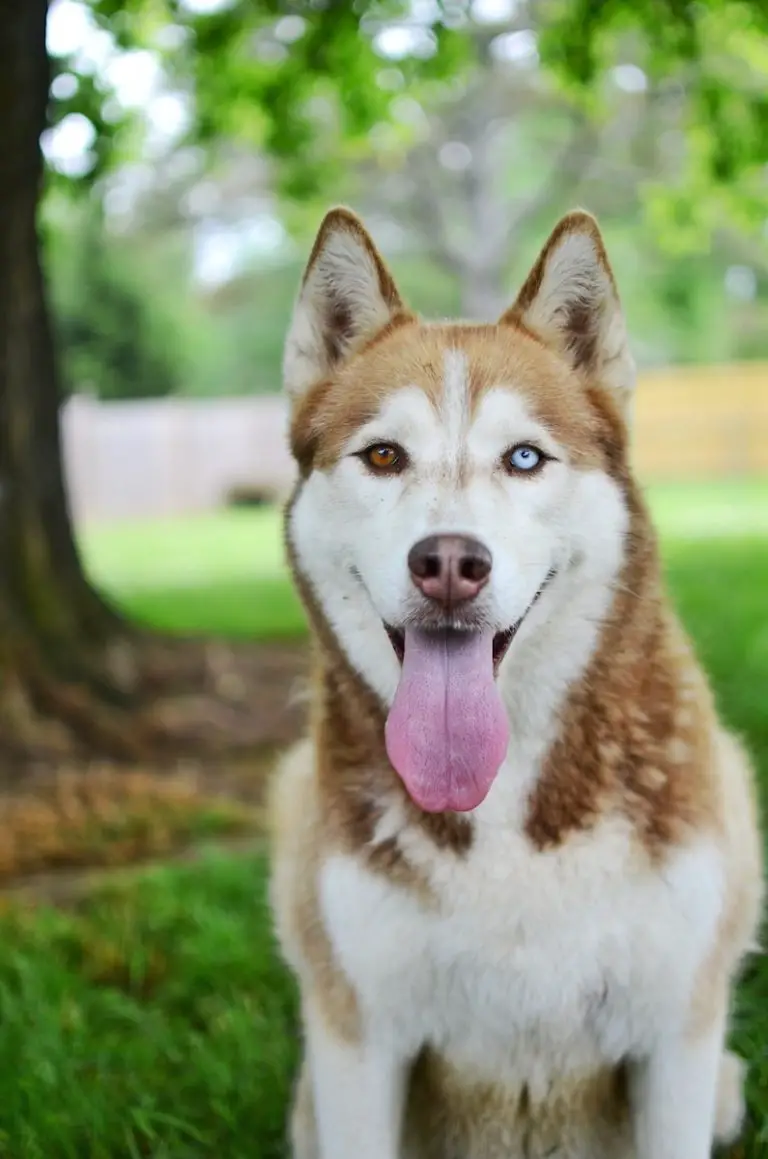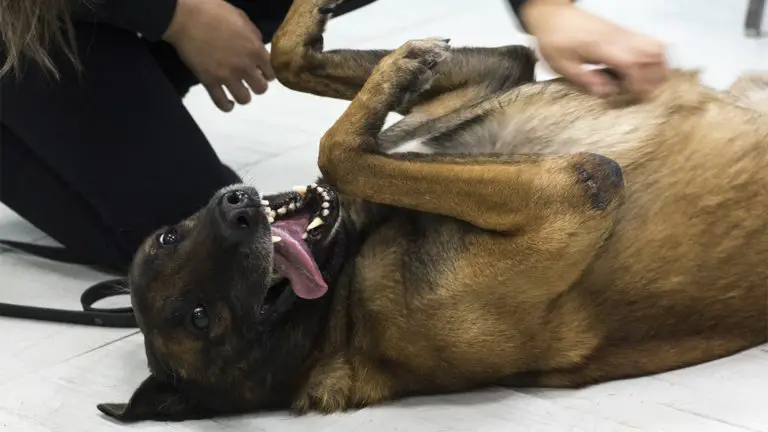Have your ever pondered why do most dogs have brown eyes? Why is brown eye color so common among dogs?
Dogs are among the most loved pet around the world. It is hard not to melt at their adorable wiggle and those innocent and loving eyes. But have you ever noticed that a majority of dogs have brown eyes?
Even though there is numerous dog breed, when it comes to their eye color, brown seems to be dominating. Different breeds have different hues of brown like amber, hazel, dark brown, medium brown, etc.
So in this article, we will be getting an answer to why do most dogs have brown eyes, what determines the color of their eyes, and much more.

What Factors Determine the Eye Color of a Dog?
To understand why do most dogs have brown eyes; you must first know the factors that determine their eye color. Below are some prominent factors that contribute to the eye color of a dog.
Genetic
Genetic is the most common factor that determines the eye color of the dog. If a particular dog breed has a long history of brown eyes, then the pup is likely to develop brown eyes.
In certain rare cases, dogs develop the merle gene. In this case, a variety of coat and iris color forms in the eye due to the presence of dilution genes that can lighten the color of the coat.
Australian Shepherd, Shetland Sheepdog, Rough and Smooth Collies, Catahoula Leopard Dog, American Foxhound are some of the breeds that are commonly known to have merle genes.
Melanin
Apart from genetics, melanin is the most common factor that determines the eye color in a dog. The color part of the eye that engulfs the black pupil is called the iris. The pigmentation in the iris varies from one dog to another, depending on the melanin concentration. It is a pigmentation that is responsible for providing color to eyes, skin, and coat in a dog.
Typically, dogs have a higher level of melanin in their iris, which gives the brown eyes to the dog. Higher the concentration of melanin, darker brown will be the color of a dog’s eyes and vice versa. When dogs have little melanin, they tend to be albino with a white coat and pink skin.
Age
The age of the dog is a factor because the production of melanin doesn’t start from the outset. This is the reason why most of the pups have blue eyes when they are born. At around two months, they develop their permanent eye color.
So during these two months, you cannot say for sure that their blue eyes will stick. However, even after two months, your dog has blues eyes, and then you can ascertain that this will stick throughout life.
Coat Color
Coat colors also determine the eye color shade in a dog. For instance, in dogs with merles coat, the blue eyes will not get darkened as merles gene will dilute the melanin pigment, making blue the permanent eye color.
In the case of brown eyes, some shades are exclusively witnessed in specific coat colors; Liver dogs primarily have amber eyes, and their nose has a light brown color. While Pharaoh hound and Anatolian shepherd have light brown eyes, Weimaraner has a yellow to grayish eye color.
Breed
A majority of dog breed has dark brown eyes. However, wild canines often show lighter color eyes as opposed to domestic dogs. Wolves that are ancestors of dogs have eyes color that varies from gold, amber to light-grown, and grey.
Domesticated dogs were likely bred to possess dark shade eyes to generate cosmetic appeal. This is because lighter eye color is denoted as Bird of Prey color, which is frowned upon by people as it gives people a harsh look.
Are Some Dog Breeds More Likely to Have Brown Eyes?
While most dogs have brown eyes, some are more likely than others to have brown eyes. Some of the dogs breed to have brown eyes include –
- Labrador
- German Shepherd
- Golden Retrievers
- French Bulldogs
- Beagles
- Pomeranians
- Shetland Sheepdogs

Can Dog Eye Color Change from Brown to Another Color over Time?
When a puppy is born, its eyes remain shut for about eight to 14 days, so during this time, it will be harder to see what color of eyes the pup has. Somewhere around the second week of birth, it will start to open its eyes; you will notice that the puppy has foggy bluish eyes.
However, in the case of albino eyes, they are born with pink, red, or white. The hues of blue vary depending on the puppy, and some can even have a somewhat grayish appearance. All puppies have lighter color eye because of the lack of melanin concentration in the iris.
As they grow, their eyes turn darker due to the production of melanin in the eyes. Between 14 days and 21 days, you will not see much of a difference in the eye color of the dog. Around the fourth week, you will start to notice that it is a change in color in your pup’s eyes.
Brown is the most common eye color found in the dogs. Some dogs have darker hues of brown, and others show lighter brown shades. It is a slow transition, which takes up to 12 weeks.
The amount of melanin produced in the iris is known as the stroma that eventually determines the permanent color of the eyes. When it turns three or four months, you can determine the actual color of your dog’s eyes.
Blue in a dog is not a color; instead, it is the absence of color. The blue shade that you witness is the reflection and refraction of light within the eye. So the production of melanin begins in a dog; this blue shade tends to fade and replaced by a darker color. If your pup continues to have blue eyes even after three months, it determines that there is little to no production of melanin in its eyes.
Dogs that have albinism are the notable exception of this scenario as they have eyes that appear pink, red, and white. They get white-colored eyes due to the reflection of light, whereas the pink or red eyes are the reflection of blood-enriched capillaries that masks the color caused by melanin in these dogs.
In certain conditions, iris tends to degenerate, and this condition is reckoned as iris atrophy. It could be a result of aging, high intraocular pressures, or chronic inflammation. In its primary forms, this disease doesn’t hinder the eyesight of the dogs.
This condition can affect any dog breed, but small breed dogs like miniature schnauzers, Chihuahuas, etc., are more prone to this condition. There are two types of iris atrophy – primary iris atrophy and secondary iris atrophy.
Symptoms of Iris Atrophy
Following are some of the prominent symptoms of iris atrophy
- Iris thinning
- Fixed or dilated pupil
- Black specks in the iris
- Sensitivity to bright light
- Change in the pupil’s shape
- Dull eye color
- Anisocoria or uneven pupil size
Causes of Iris Atrophy
Below are some of the prominent causes of iris atrophy.
- Primary iris atrophy is a normal condition that is the result of aging in dogs. This health condition is also known as senile iris atrophy and typically seen in middle-aged or older pups.
- Secondary iris atrophy is the result of chronic inflammation like glaucoma, uveitis, etc. Moreover, ocular trauma due to the sharp or blunt force to the eye can also result in secondary iris atrophy.
Diagnosis of Iris Atrophy
If you witness any of the symptoms mentioned above in your dog, then you should consult the veterinarian immediately. The doctor will want to assess the past medical history to determine whether there is any previous eye injury, infection, or any other issues.
After that, your dog will be taken for a physical examination that might include various tests such as ophthalmology exam, tonometry, corneal tests, skull x-rays, neurological examination, etc.
Treatment for Iris Atrophy
When it comes to primary iris atrophy that is caused by aging, no particular treatment is providing. This is because weakening or shrinking of the iris is a non-reversible condition. While the shape of the dog’s eye will be changed, it will not impact its healthy eyesight
Secondary iris atrophy is caused by diseases like chronic uveitis, glaucoma, etc. and treated by managing the underlying diseases. Secondary iris atrophy that is caused by trauma may also need antibiotics, surgical procedures, analgesics, and anti-inflammatories.
Recovery from Iris Atrophy
Primary iris atrophy is a normal aging condition that cannot be treated, and it doesn’t hold any harmful implications. So recovery is not needed in this condition. The veterinarian will continuously monitor your dog’s health.
The recovery time in secondary iris atrophy entirely depends on the cause. If it is due to any chronic diseases, then your dog’s health will need to be monitored continuously. Dogs who suffer from uveitis can be treated by the right medication to control the inflammation and reduce the pain.
What Is the Second Most Common Type of Eye Color in Dogs?
While most dogs have brown eyes in different shades, in a certain condition, they show different eye colors, and in this section, we will be discussing other eye colors found in dogs.
Amber Eyes
Next to brown, amber is the most common type of eye color found in the dogs. The eye color in dogs, as well discussed, is due to the melanin concentration in the iris. Higher the concentration, darker the eye color, which is why brown is the most common color. Dogs with amber eyes have slightly less amount of melanin in their iris.
People often think that dogs with amber of golden eyes are aggressive than others as their eye color resembles wolves. While it is a variation of the brown, spotting a dog with amber eyes is still rare. Dogs that carry blue or liver genes have higher potential to have amber eyes. Australian Cattle Dog, Great Danes, Bluetick Coonhounds, Greyhounds, Dachshunds, Havanese, etc. are some common dog breeds that can have amber eyes.
Blue Eyes
Genetics, health issues, and pigmentation can alter the default color of a dog’s eyes. Typically, dogs have blue eyes due to the low concentration of melanin in iris. Often blue eyes in dogs are associated with merles genes where cells are unable to create any pigmentation.
Some of the common breeds that have merle genes include Catahoula Leopard Dog, Australian Shepherd, Old English Sheepdog, Hungarian Mudi, Colle, Cardigan Welsh Corgi, Great Dane, Great Pyrenees, etc. Often merle genes dogs are prone to health concerns and needs extra care and attention
Moreover, some specific breeds have particular genes that can result in blue eyes. Siberian Huskies and Border Collies are common dog breeds with blue eyes. These breeds don’t possess any health issues associated with merle genes.
Albino dogs are breeds that show significant loss of pigmentation throughout their bodies, resulting in blue eyes and a pink nose.
In some rare cases, dogs have developed blues eyes even in breeds that show no characteristics of having blue eyes. Such a scenario mostly happens in case of mixed-breed when a breed like a shepherd or husky in involved.
Green Eyes
Contrary to what people believe, a dog with green eyes doesn’t have green pigment. In reality, they have little to no pigment in their iris. They appear green because of the way light bends when it moves through the eye lens. Color in the eyes occurs due to the eumelanin pigment density in the iris.
Dogs with green eyes have a small concentration of eumelanin that combines with the refraction of light and gives out a green hue. Most commonly, dogs have green eyes due to the merle genes.
The green glow in the eyes is another misconception that needs to be treated. All dogs have purple tapetum lucidum. By the time they are 16 weeks, the tapetum transforms into yellow-green color, resulting in their night-time glow. Dogs with white coats and blues eyes tend to generate a red-eye glow due to the high exposure of blood vessels to the dark.
Schnauzer brings a notable exception to this green glow concept as it produced a turquoise-blue glow under the dark. The American Pit Bull Terrier is the most common dog that produces green eyes.

What Is the Rarest Dog Eye Color?
Dogs that suffer from Heterochromia have the rarest eye color that you will see. While genetics plays an important role, how this condition occurs is not entirely determined. This syndrome is also present in horses, cats, and humans.
Some canine breeds are more likely to have Heterochromia than other dog breeds. These dogs have different melanin concentrations in each eye, and the amount of melanin determines the color in each eye.
At its core, it is a condition where each eye has a different color, either in part or whole. There are different types of Heterochromia. Genetics is the most common occurrence of Heterochromia. Dogs that have Heterochromia from birth suffer from a condition that is known as congenital Heterochromia.
Furthermore, complete Heterochromia occurs when each eye has an entirely different color. For instance, one eye is entirely brown, and the other eye is altogether blue. Heterochromia iris or partial Heterochromia is when each eye is a different color but also share a common color.
Some dog breeds that are likely to have Heterochromia include:
- Shetland Sheepdogs
- Huskies
- Beagles
- Dalmatians
- Welsh Corgis
- Great Danes
- Alaskan Malamutes
- Australian Shepherds
- Catahoula Leopard Dogs
- Shih Tzus
- Chihuahuas
These breeds are more likely to have Heterochromia primarily because the genes that are responsible for their eye color are hard to determine and verify. Furthermore, often, the genes for eye color expression are the same for coat color, and they can be associated with other related genetic traits.
Research in Heterochromia is prevailing, and much new theory has come up. Canine biologists are continually working to assess which genes are responsible for Heterochromia. While in some cases, Heterochromia is linked to illnesses, there are cases where dogs seem to be perfectly healthy. Additionally, a dog can develop Heterochromia in the later stage of its life due to some diseases like cataracts, glaucoma, retinal dysplasia, etc., or injury.
Conclusion
Now you know why do most dogs have brown eyes and how that color occurs. Additionally, you also see the color of your dog’s eyes can be linked to its health; therefore, it is essential to monitor the changes in the eyes of your dog. While it might be genetic, sometimes these changes can be an indication of health issues.
Keeping an eye on the changing color, pattern, and shape of the iris can help you be proactive with regards to the health of your dog. If you see any unusual changes, make sure that you consult with a veterinarian and get the right treatment at the right time to ensure the overall well-being of your pup.
Daniel Bloom is the mind behind the Dog Pages blog. He created this blog for the love his dog, Augustine. He manages his team of contributors who love dogs as much as he does. When he is not blogging, he spends his time cooking and reading. He never misses his daily walks with his dog and loves to play Frisbee with Augustine whenever he gets a chance.
Did you like this article?







